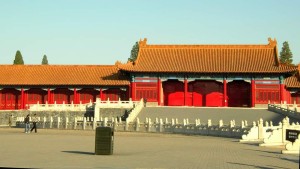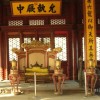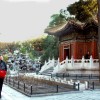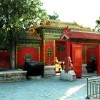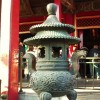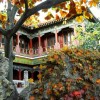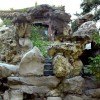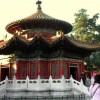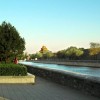- Photos
- The Palace Museum
The Palace Museum
TM
Tannistha Mukherjee
Updated
Explain more about the photos or videos like location, time and the specific camera settings you would have used to take these photos. Also, if you would have used any accessories or a smartphone app to take the media you are sharing, you can mention them here.
The Palace Museum, also known as the Forbidden City, is located in Beijing, China. It is one of the most iconic and well-preserved imperial palaces in the world. Here's some information about the Palace Museum:
Historical Significance: The Palace Museum was the Chinese imperial palace from the Ming Dynasty to the end of the Qing Dynasty, spanning over 500 years. It served as the residence of the emperors and their households, as well as the ceremonial and political center of the Chinese government.
Architecture: The Palace Museum covers a vast area of 180 acres and consists of 980 surviving buildings. It is renowned for its exquisite architectural design, featuring traditional Chinese palatial style with distinctive yellow roofs, red walls, and intricate decorations. The layout follows strict principles of feng shui and is divided into two main sections: the Outer Court and the Inner Court.
Collections: The museum houses an extensive collection of cultural and historical artifacts from the Ming and Qing Dynasties. It boasts over 1.8 million pieces of art, including paintings, calligraphy, ceramics, jade, furniture, and other treasures of Chinese imperial heritage. Many of these artifacts are considered national treasures.
Highlights: Some of the most famous and significant attractions within the Palace Museum include the Hall of Supreme Harmony, the Hall of Central Harmony, the Hall of Preserving Harmony, the Palace of Heavenly Purity, the Hall of Mental Cultivation, and the Imperial Garden. These buildings showcase the grandeur and architectural brilliance of ancient Chinese palaces.
UNESCO World Heritage Site: The Palace Museum was designated as a UNESCO World Heritage Site in 1987. It is recognized for its outstanding universal value in terms of architecture, history, and art.
Visitor Experience: The Palace Museum is open to the public, allowing visitors to explore its vast complex, gardens, and exhibitions. It offers a glimpse into China's imperial past and provides insights into the rich cultural heritage of the country. However, due to its popularity, it can get crowded, so it's advisable to plan your visit accordingly.
Conservation Efforts: The Palace Museum has been dedicated to the preservation and restoration of its buildings and artifacts. Ongoing conservation projects ensure the protection and longevity of this cultural treasure, allowing future generations to appreciate its beauty and historical significance.
Visiting the Palace Museum is a remarkable experience that offers a deep dive into China's imperial history and architectural marvels. It stands as a symbol of Chinese civilization and remains one of Beijing's top tourist attractions.
Historical Significance: The Palace Museum was the Chinese imperial palace from the Ming Dynasty to the end of the Qing Dynasty, spanning over 500 years. It served as the residence of the emperors and their households, as well as the ceremonial and political center of the Chinese government.
Architecture: The Palace Museum covers a vast area of 180 acres and consists of 980 surviving buildings. It is renowned for its exquisite architectural design, featuring traditional Chinese palatial style with distinctive yellow roofs, red walls, and intricate decorations. The layout follows strict principles of feng shui and is divided into two main sections: the Outer Court and the Inner Court.
Collections: The museum houses an extensive collection of cultural and historical artifacts from the Ming and Qing Dynasties. It boasts over 1.8 million pieces of art, including paintings, calligraphy, ceramics, jade, furniture, and other treasures of Chinese imperial heritage. Many of these artifacts are considered national treasures.
Highlights: Some of the most famous and significant attractions within the Palace Museum include the Hall of Supreme Harmony, the Hall of Central Harmony, the Hall of Preserving Harmony, the Palace of Heavenly Purity, the Hall of Mental Cultivation, and the Imperial Garden. These buildings showcase the grandeur and architectural brilliance of ancient Chinese palaces.
UNESCO World Heritage Site: The Palace Museum was designated as a UNESCO World Heritage Site in 1987. It is recognized for its outstanding universal value in terms of architecture, history, and art.
Visitor Experience: The Palace Museum is open to the public, allowing visitors to explore its vast complex, gardens, and exhibitions. It offers a glimpse into China's imperial past and provides insights into the rich cultural heritage of the country. However, due to its popularity, it can get crowded, so it's advisable to plan your visit accordingly.
Conservation Efforts: The Palace Museum has been dedicated to the preservation and restoration of its buildings and artifacts. Ongoing conservation projects ensure the protection and longevity of this cultural treasure, allowing future generations to appreciate its beauty and historical significance.
Visiting the Palace Museum is a remarkable experience that offers a deep dive into China's imperial history and architectural marvels. It stands as a symbol of Chinese civilization and remains one of Beijing's top tourist attractions.
Enter the keywords that are relevant to the photos or videos that you will upload with this post.
User reviews
There are no user reviews for this listing.
Already have an account? Log in now or Create an account

